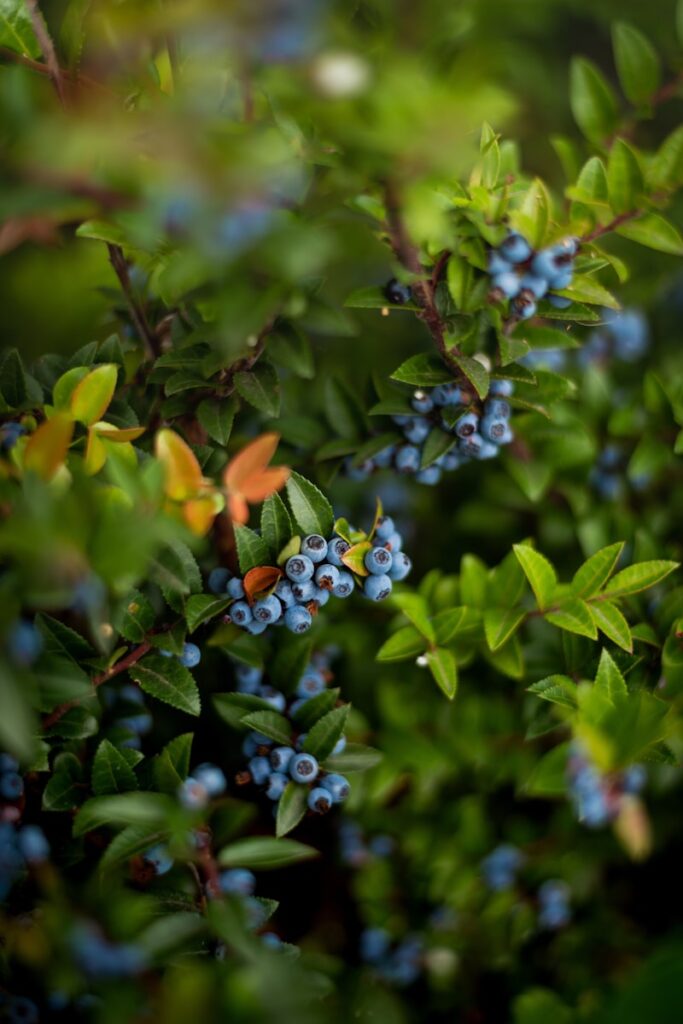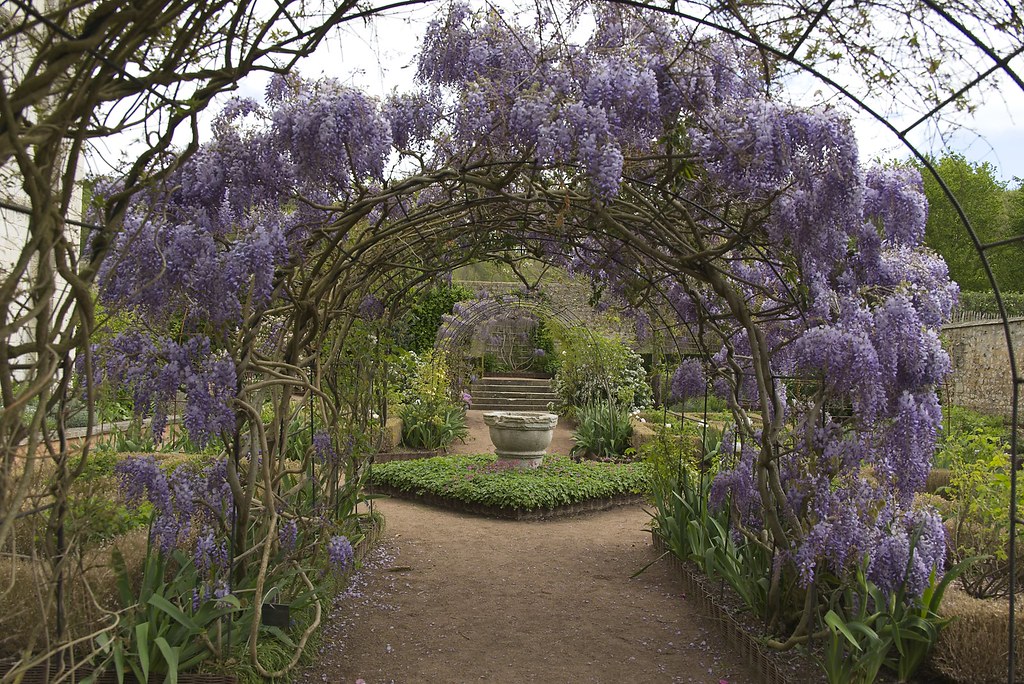Have you ever gazed out at your garden, anticipating your blueberry bush to be skyward bound, only to discover it lazily sprawling sideways? If you’re nodding along, you’re not alone. Many garden enthusiasts face this very predicament, but fear not! The journey to a vertically thriving blueberry bush is both fascinating and achievable.
Early Care of Blue Berries
It’s crucial to understand the basics of how blueberries grow. These delightful berries sprout from side-shoots off the main branches of the bush, with fruitful production limited to branches at least a year old. Older branches, those beyond four years, often see a decline in berry output. This lifecycle underscores the importance of regular pruning; it’s not just about aesthetics but ensuring a bounty of berries year after year.
Pruning is a crucial step that can’t be overlooked. Without it, your bush might get stuck in a biennial bearing pattern, fruiting heavily one year and taking a vacation the next. It’s also about control; a towering bush can be a nightmare to harvest from, and its dense interior could become a haven for diseases. By thinning out the middle, you’re promoting better airflow and allowing sunlight to kiss the inner branches, vital for disease prevention and fruit ripening.
When your blueberry bush is still in its youthful phases—the first two years, to be precise—it’s in training mode. During this period, it’s all about guiding your bush to grow in the desired manner. Crossed branches are a big no-no; they distract the bush from focusing its energy on strong, upward growth. Removing these crossed branches early on helps shape a well-structured bush that keeps its fruit off the ground and within easy reach.
By the second year, it’s time to get a bit more hands-on. Branches that haven’t shown much growth should be bid farewell, leaving behind those that have stretched upwards. And if you’re wondering about that long, unruly branch that seems to be reaching out for a handshake? Trimming it back can encourage the bush to branch out—quite literally—into a fuller, more robust form.
You might be tempted to let your young bush strut its stuff and flaunt its fruit. Resist the urge! Those plump fruit buds that catch your eye in the first two years should be removed. It might seem counterintuitive, but your bush needs to channel its energy into growing sturdy and tall, not into early fruit production. And if a sneaky flower blooms from a missed bud, snip it away. Your patience will be rewarded in the long run with a bush that’s both visually striking and abundantly fruitful.
To stake or not to stake? While staking can offer support, especially if your bush is leaning like it’s trying to catch a few extra rays, the real game-changer lies in diligent, thoughtful pruning. By understanding the unique needs of your blueberry bush and employing these early care strategies, you’re laying the groundwork for a lush, upward-reaching blueberry haven. Remember, every snip and trim is a step towards a harvest that’s not just easier to pick but also more plentiful. So, grab those shears, and let’s turn that sideways sprawl into a vertical spectacle to behold.

Mature Pruning of Blue Berries
Let’s dive into the nuanced world of pruning and guiding your blueberry bush towards that coveted vertical growth. After establishing a strong foundation in the early years, it’s time to refine our approach and tackle the mature stages of your bush’s life. It’s like entering the sophomore years of gardening; you’ve got the basics down, now let’s sophisticate our technique.
As your blueberry bush matures, it’s crucial to maintain a vigilant pruning schedule. The goal here isn’t just to keep your bush from sprawling outwards but to encourage it to reach upwards, creating a more productive and manageable plant. Think of it as sculpting; with each cut, you’re shaping the future of your blueberry bush.
The first step in this advanced pruning guide is understanding the right time to wield your shears. Winter, with its dormant calm, offers the ideal backdrop for this task. Late February to early March is the sweet spot, allowing you to clearly distinguish between the fat, fruit-bearing buds and the flatter, leaf-producing ones. This clarity is essential as it guides your cuts towards fostering a fruitful harvest.
Equipping yourself with the right tools can make a world of difference. Sharp shears, loppers for those thicker branches, and a reliable pair of gloves are your allies in this endeavor. Remember, cleanliness is next to gardenliness; keep your tools disinfected to prevent the spread of disease from one cut to the next. A simple dip in a disinfectant solution or a swipe with an alcohol-soaked rag can keep your blueberry bush healthy.
Onto the art of pruning. Start by removing any diseased or damaged canes. These not only mar the beauty of your bush but also siphon off vital resources that could be better used elsewhere. Next, turn your attention to the spindly, weak growth, especially that which hugs the ground too closely. These underperformers do little more than crowd the scene, and their removal redirects nutrients to the stronger, sky-aspiring branches.
But what about the main event—encouraging vertical growth? Here, strategic pruning is key. Focus on thinning out the bush to improve airflow and sunlight penetration. This not only reduces the risk of disease but also stimulates growth upwards. When cutting back canes, aim to leave those that are strong and have shown clear vertical ambition. By reducing crowding, you allow these champions the space to stretch towards the sun.
Remember the tale of the long, wayward branch from earlier? Here’s where it gets interesting. Trimming these outliers not only tidies up your bush but also stimulates growth in the surrounding branches, encouraging them to fill out and up. It’s a clever trick that harnesses the bush’s natural response to pruning, redirecting its energy into vertical stretching.
Nurturing a blueberry bush into a vertical marvel is a blend of science, art, and a dash of patience. Through careful pruning, mindful maintenance, and a keen eye for the bush’s natural rhythms, you can transform your sprawling blueberry bush into a towering beacon of lush, ripe berries. It’s a rewarding journey that not only beautifies your garden but also promises a bountiful harvest. So, here’s to the upward climb—may your blueberry bush reach new heights, and may your garden be all the richer for it.
Related posts:
How to Prune Blueberries: 14 Steps (with Pictures)
Pruning Blueberry Bushes & Blueberry Bush Care For A Larger Harvest
How to prune a blueberry bush: easy step





